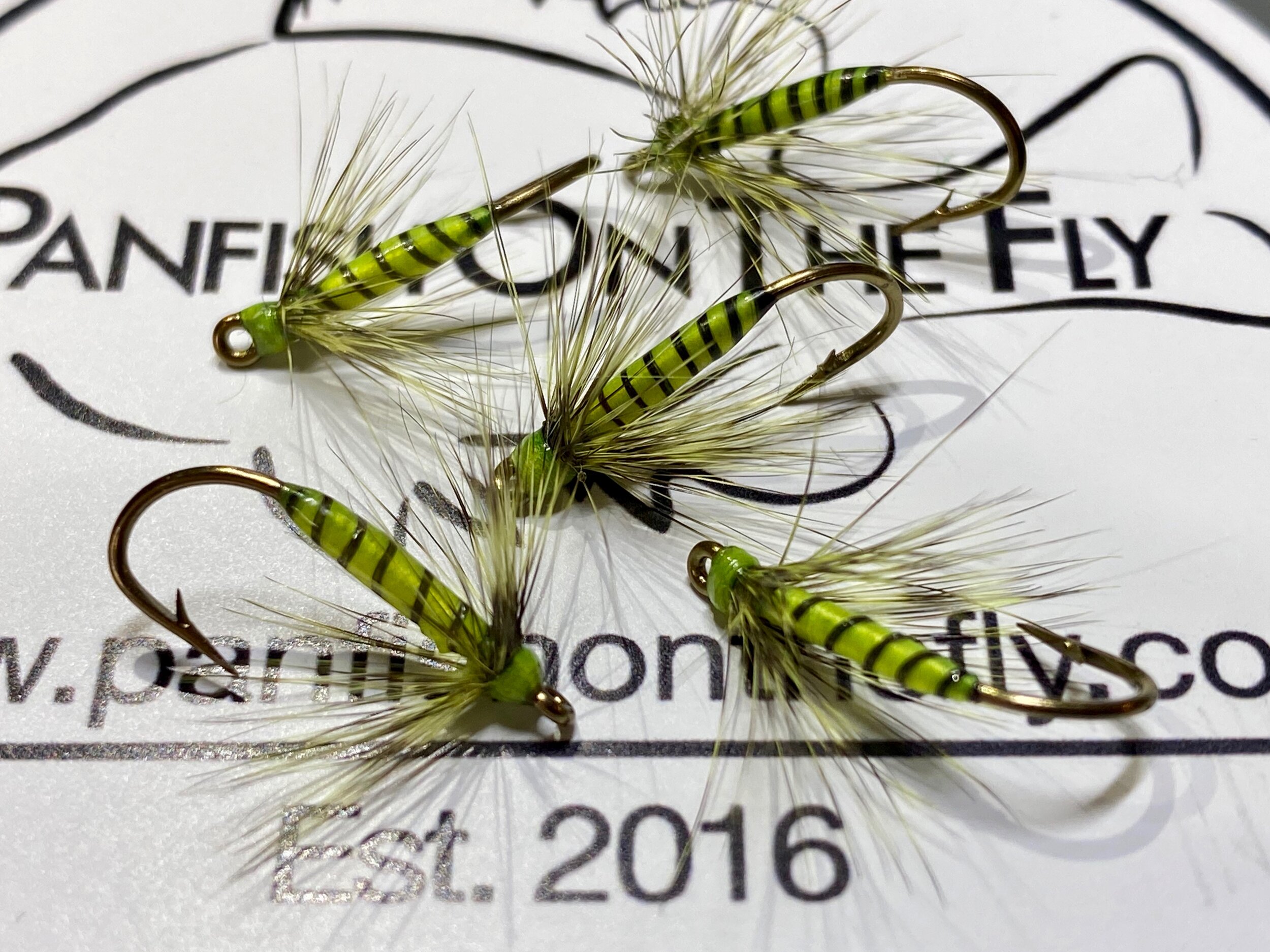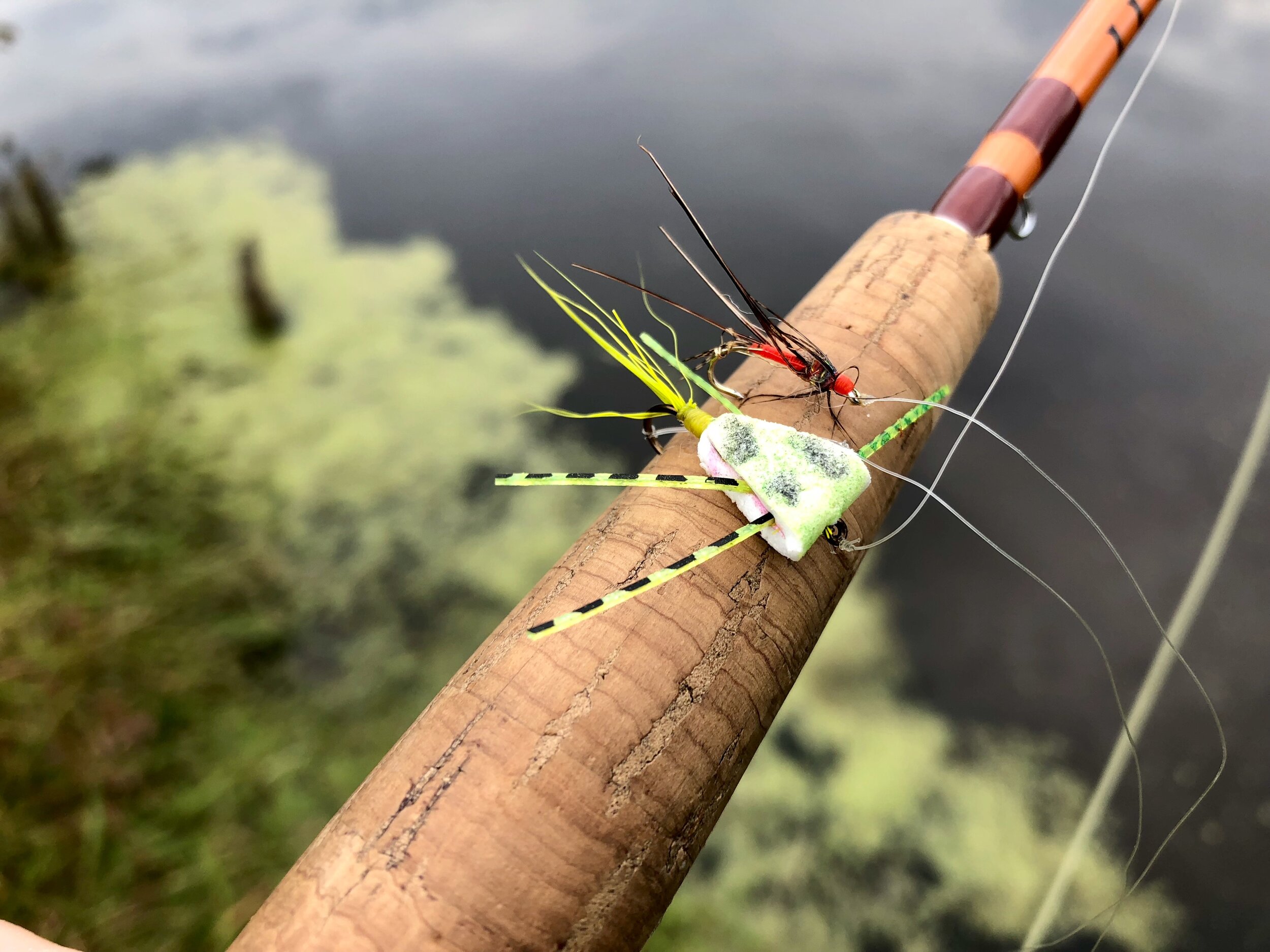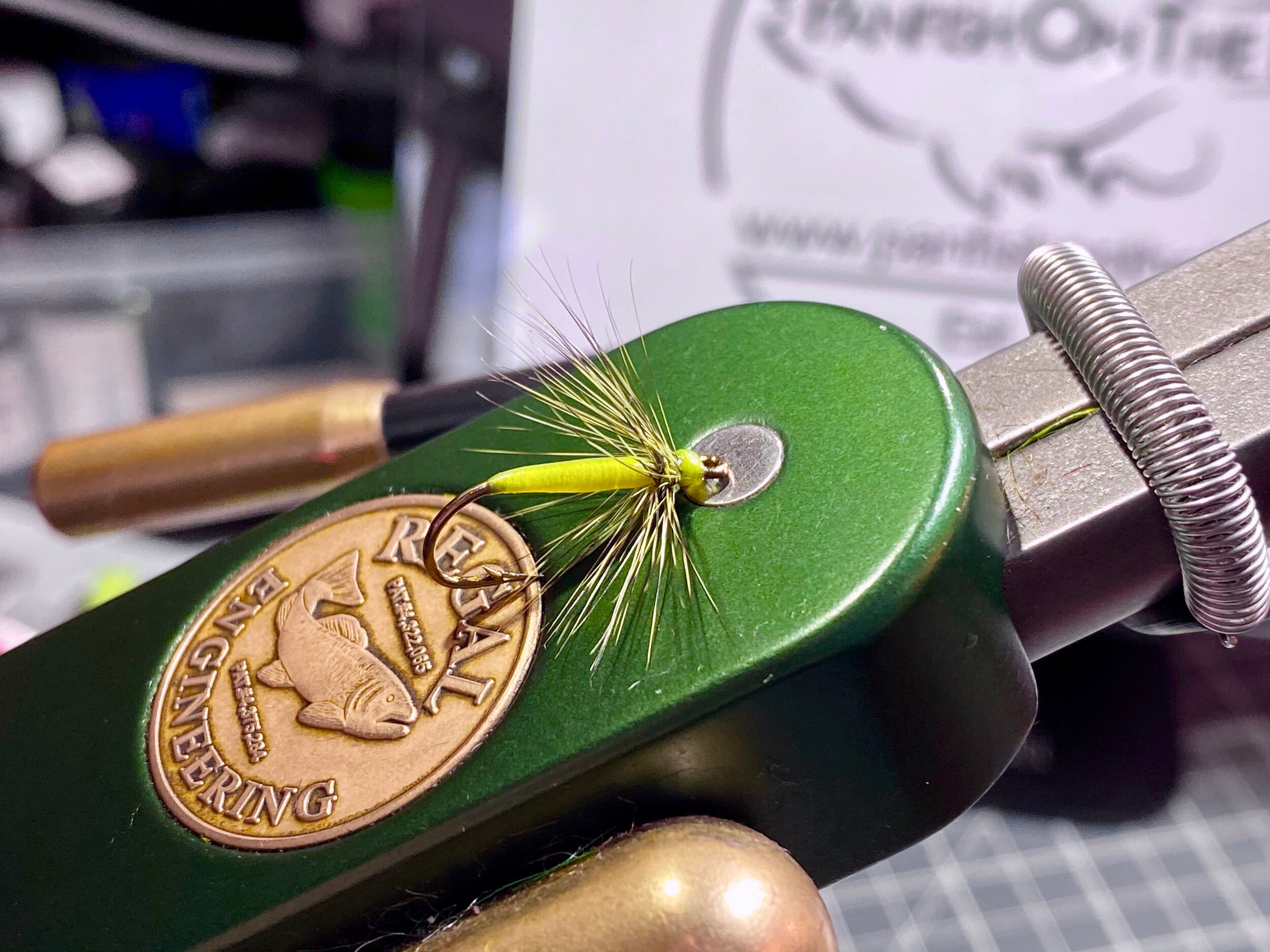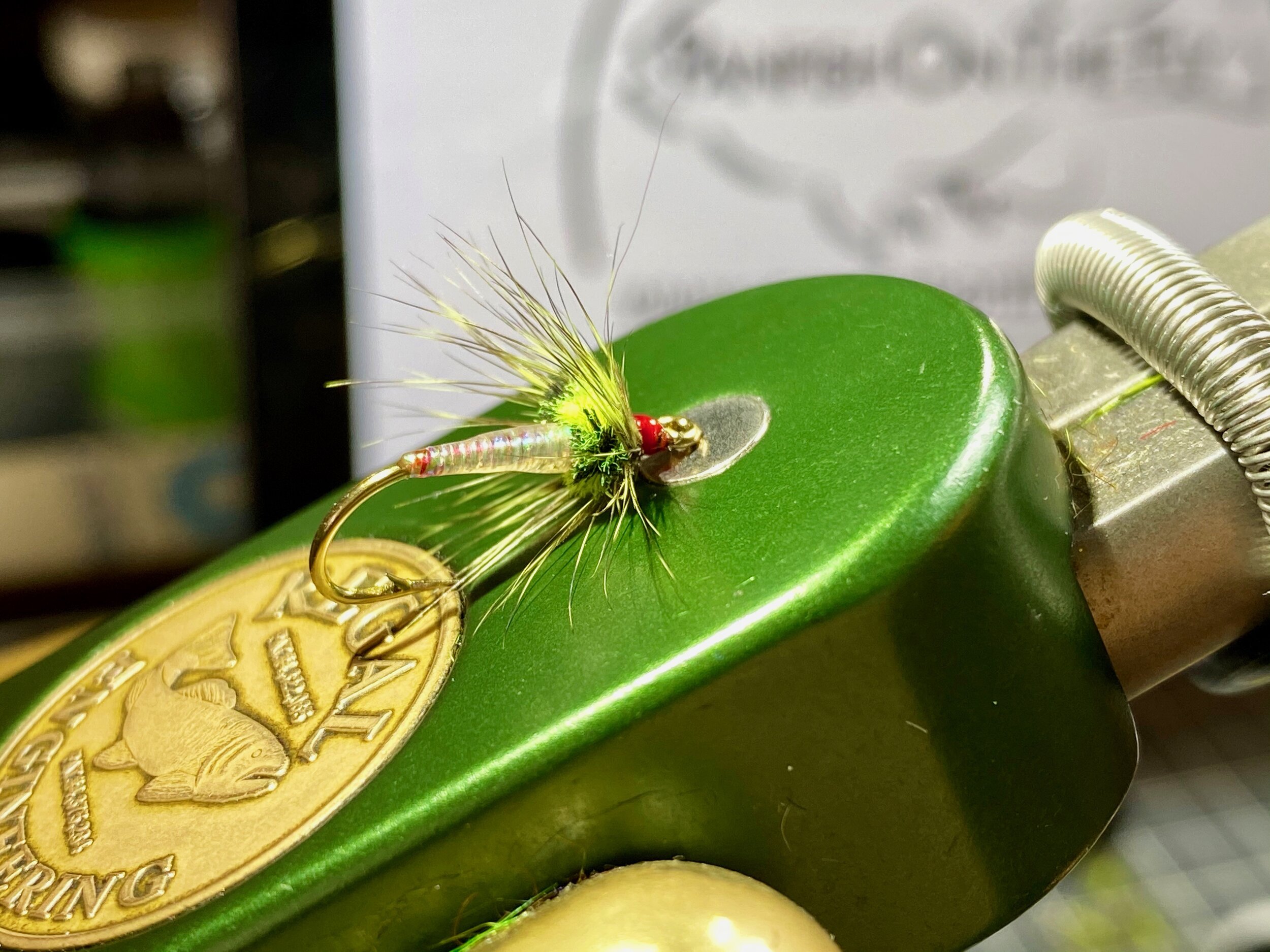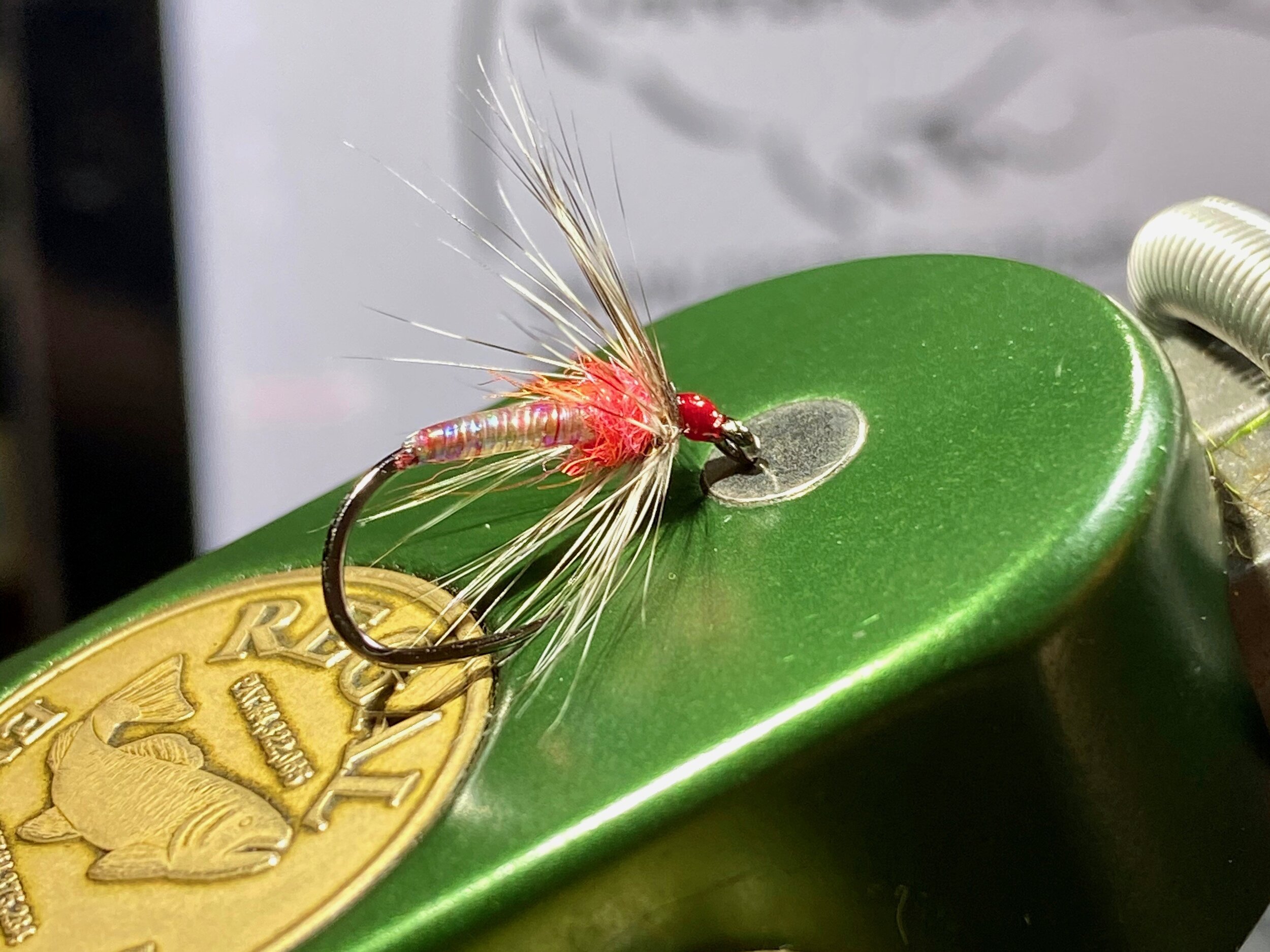I probably catch more panfish on wet flies than all other types of fly patterns combined. Although not as fun to fish as a topwater bug or popper, they catch far more fish. Since fish do the majority of there feeding under the surface of the water, it stands to reason that flies fished below the surface will catch more than flies fished on it. Wet flies are my go-to pattern for early and late season fishing when the water gets chilly. In fact, the only time I don’t fish them is in the height of summer when weed growth on some waters make fishing subsurface flies difficult.
You cannot beat the effectiveness of wet flies when it comes to panfish!
The Wet Fly Box
My warm water wet fly boxes contain a few different types of wet flies and soft hackles. I prefer a soft hackle style fly in warm water, but there are a few winged wets in there as well. Some of the more traditional soft hackles that I rely on can be found in my Soft Hackle Selection. These flies have bodies constructed of conventional materials like feathers, fur, and floss. While highly effective, they can be somewhat fragile. One of the great things about fly fishing for bluegills and other panfish is that you often have the opportunity to catch a lot of fish. Catching a dozen or more fish on a single flies has a tendency to wear them out pretty quick. It is an excellent problem to have if you are a fly tier because now you have a reason to tie more flies! That being said, I am always looking for a way to make flies more durable.
One look at the tattered wet flies in this picture will explain why bluegill flies need to be durable!
A More Durable Wet Fly
Several years ago, I started experimenting with 5-minute epoxy to protect the bodies of my wet flies and make them more durable. An epoxy bodied fly is nearly indestructible and is perfect for flies fished beneath the surface as it helps them sink a little better. Working with epoxy had its downsides, though. Flies had to be tied in stages and treated with the epoxy all at the same time. Those same flies had to be put on drying wheels to ensure the epoxy would not sag. The 5-minute expo was also a little thick for this use and tended to create too much bulk, so it had to be applied very sparingly. Although the end result was a beautiful, durable fly, it was a lot of work for a panfish fly! The second problem I had with most epoxies is they tended to yellow with age. After a couple of seasons, the bodies on my epoxy wet flies would begin to cloud up or turn yellow. Since the flies were so durable, they tended to stick around, so this was a real problem for me.
Thread coated with UV resin makes a simple, durable and effective body for a wet fly
A Solution To The Epoxy Problem
The use of UV Resins in fly tying has been widespread for a few years now. The use of UV resins was a game-changer for the fly tier. UV resins cured/hardened like epoxy in seconds when exposed to the proper light source. This was far superior to having to wait for the epoxy to dry, making it far more versatile than epoxy. New UV products showed a lot of promise, but they all shared a few common problems. The biggest challenge was the tacky surface left behind once the resin had cured. A few new UV Resins claim to have solved this problem. One brand, Solarez, has created a line of UV resins that are indeed tack-free. Disclosure: I am a Pro Team member for Solarez, so I use their products exclusively, but other brands claim they are tack-free as well. Feel free to do your own research.
The Solarez line of resins has virtually replaced epoxy in my fly tying. From coating, a soft, flexible body on a foam popper to finishing the thread wraps on the head of a salmon fly, they have a UV resin for every fly tying needs. Solarez and other companies are now offering colored UV resins as well, which will really expand their use in fly tying. This is starting to sound like a sponsored advertisement for Solarez, which it is not, so let us move on to the fly!
By replacing 5-minute epoxy with UV resin I can create great looking durable flies without the hassle of dealing with epoxy!
The Epoxy/Resin Bodied Wet Fly
As I mentioned earlier, I have replaced epoxy with UV resin in most of my fly tying so this pattern seemed a natural for a resin-coated body. Epoxy was used initially to create a durable body that would hold up to dozens of fish. It was also used to create a fly that was denser and would easily break the surface tension of the water and begin to sink without have to add beads or lead wraps under the thread body. The use of UV resins allows me to create the same effects without all the downsides of epoxy. I prefer to use a thin resin to cover the thread bodies of these flies. In this case, I am using Solarez Bone Dry. You brush on a thin layer and hit it with the light for a few seconds, and you are done. The end result is a clear, glossy, durable epoxy-like body with a smooth tack-free finish.
Thread Bodies - Simple and Versatile
Creating a fly could not be easier. The body of the fly is thread and UV resin, nothing else. For my panfish sized flies, which are tied on hooks that range from size 8 down to 18, I vary the size of the thread I use based on the fly. I use as heavy a thread as possible (based on the size of the hook), so I can quickly build a smooth body with a minimal number of thread wraps. I prefer a flat thread like Danville or UTC, which I can untwist and lay down smoothly. I coat the body with UV resin and cure it before tying in any hackle, so I eliminate the risk of getting UV resin on the hackle fibers. Threads are available in a wide range of colors, so you create flies in every color of the rainbow from subtle natural hues to bright, gaudy attractors.
Interesting translucent bodies can be created by using flash material like Crystal Flash instead of thread.
Although thread makes an excellent body material you have other options as well. I often create a body with stranded flash products like Crystal Flash. This produces a very interesting effect, which can be quite effective at times. When the mood strikes me I also dress these flies up a bit by adding a thorax of a contrasting color of dubbing or chenille.
If you want to dress up the fly a bit add a thorax of dubbing. This particular fly also has a wrapped flash body instead of thread.
If you do not currently have wet flies in your arsenal, you need to change that immediately. If you are already using wet flies, be sure to add this style of fly to your fly boxes. You won’t regret it!
